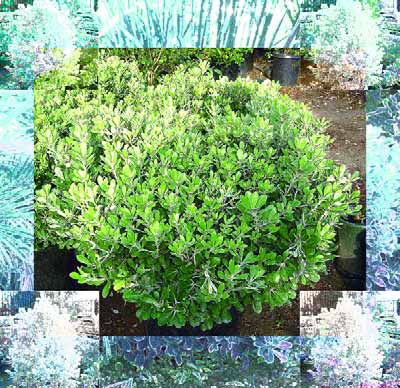ARTICLES
Advance Search
Aquatic Health
Aquatic Health, Fitness & Safety
Around the Internet
Aquatic Culture
Aquatic Technology
Artful Endeavors
Celebrity Corner
Life Aquatic
Must-See Watershapes
People with Cameras
Watershapes in the Headlines
Art/Architectural History
Book & Media Reviews
Commentaries, Interviews & Profiles
Concrete Science
Environment
Fountains
Geotechnical
Join the Dialogue
Landscape, Plants, Hardscape & Decks
Lighter Side
Ripples
Test Your Knowledge
The Aquatic Quiz
Other Waterfeatures (from birdbaths to lakes)
Outdoor Living, Fire Features, Amenities & Lighting
Plants
Ponds, Streams & Waterfalls
Pools & Spas
Professional Watershaping
Structures (Editor's Notes)
Travelogues & History
Water Chemistry
WaterShapes TV
WaterShapes World Blog
Web Links
Around the Internet
Aquatic Culture
Aquatic Technology
Artful Endeavors
Celebrity Corner
Life Aquatic
Must-See Watershapes
People with Cameras
Watershapes in the Headlines
It may seem an odd source of inspiration, but I've always been interested in retaining walls. Even as a child, I'd see photographs of terraced hillsides rich with crops and wonder, "How did they do that?" I've since done my homework and have found historical evidence indicating that the skills needed to build these structures goes back many hundreds of years. I'm now applying those same skills today in devising soil-retaining systems for my clients. Whether it's farmers creating flat spaces on which to
In looking back over several recent projects, I noticed that I've been using one particular genus of plants more frequently than just about any other. Its name probably evokes thoughts of petri dishes and bacterial colonies for most of us, but this plant genus - Pittosporum - has truly held an extremely valuable position in most of my plant palettes in recent years and is one of the most useful of all plant types I use. I find myself pointing them out every time I take clients to a nursery to view and select plants, and it seems I'm always trying to find ways to fit one or more of its many varieties into my planting plans. I treasure them for their great variety in
For centuries, the Mediterranean gardens of Italy, France, Greece and Spain have put sun-thriving plants on beautiful display in dry environments. The Greek isles flourish with wildflowers whose colors become more vivid against the bleached background, while Spanish gardens combine the fragrant blossoms of citrus trees and the fragile pink blooms of Almond trees with open, arid landscapes. Italian and French gardens present more formal atmospheres, incorporating boxed and trimmed trees with trellises and pergolas draped with vines. Each area has its distinct style, but the main elements of these gardens are the same, with the hot sun being the primary common factor. As is revealed, however, in Designing and Creating a Mediterranean Garden by the English artist Freda Cox, it is possible to cultivate
One of the perks of my job as Editor of WaterShapes is that from time to time I get to go on the road to see truly great work in person, often in stunning locations. Occasionally, however, when I walk on site my best expectations are blasted to
In my years as a practicing landscape architect, I've found that designers love in particular to borrow elements from the Spanish Colonial style of architecture. In fact, it has become one of the most important and influential of all architectural forms. This archetypal architecture flourished between the 16th and early-19th centuries in the New World and is based upon historical models established in
As is true of many things we savor in our lives, our perception of texture is filled with subtlety and nuance. This is particularly true in gardens, where space, form, color and texture dance together to create our experience of a living entity and, for designers and installers, of the envisioned entity as well: We start by defining the entity's function and style - make it an outdoor room, a neoclassical knot garden or a meditative space - then layer hardscape and plant materials to engage the five senses one by one or all at once. Texture plays a large role in creating this sensory engagement: It's the lure that invites observers to pause and linger, to breathe deep and compose themselves within the environment. In that sense, texture is the twin of form and the companion to color in the triad of basic garden relationships. Texture also involves an
When someone calls and asks you to "landscape my home," what does it mean? Are you going over to put plants and trees in the ground, or will you be rolling in with backhoes to install a pond? This initial uncertainty is why, before any project begins in earnest, there are questions to be asked. It's also why there are measurements to be taken, elevations to be shot, sketches and more sketches to be drawn, meetings to schedule and plans to present. Then, maybe, a working design will develop and then, maybe, construction will start. Gathering information and doing the foundation work on a design takes research, patience, experience and time, and it's never
With a first glance at last month's cover of LandShapes, a colleague of mine said he thought it more properly belonged on the cover of an architecture magazine instead of on my landscape publication. It was beautiful, he said, but he felt that the dominance of the wall in the image made him wonder if he'd received the right magazine. In defending the choice of this photograph, I found myself flooded by all sorts of thoughts and considerations, many of them having to do with
Even though color is literally everywhere, most people know surprisingly little about it. That's a knowledge gap designers in particular should overcome, says artist, colorist and teacher Judith Corona, who adds that understanding the nature of color, how it influences moods and emotions and how a color wheel works are all useful when it comes to making valuable recommendations to clients about their watershapes and landscapes.






















